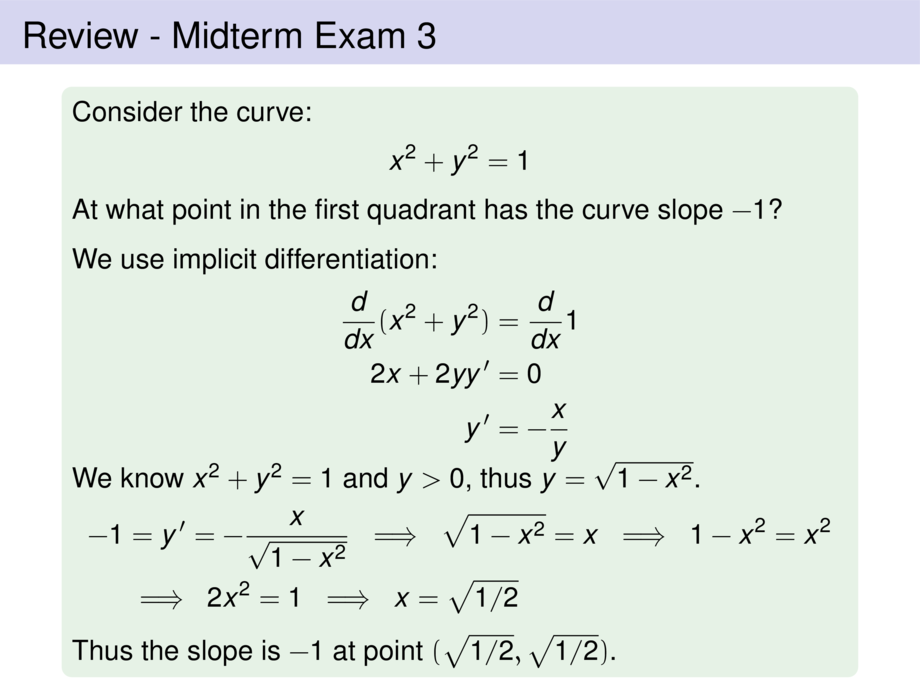



































































































135/176
\begin{frame}
\frametitle{Review - Midterm Exam 3}
\begin{exampleblock}{}
Consider the curve:
\begin{talign}
x^2 + y^2 = 1
\end{talign}
At what point in the first quadrant has the curve slope $-1$?
\pause\medskip
We use implicit differentiation:
\begin{talign}
\frac{d}{dx}(x^2 + y^2) &= \frac{d}{dx} 1\\
\mpause[1]{2x + 2yy' &= 0} \\
\mpause{y' &= -\frac{x}{y}}
\end{talign}\vspace{-2.25ex}
\pause\pause\pause
We know $x^2 + y^2 = 1$ and $y > 0$, thus $y = \pause \sqrt{1-x^2}$.
\pause
\begin{talign}
-1 &= y' = -\frac{x}{\sqrt{1-x^2}}
\mpause[1]{\;\implies\; \sqrt{1-x^2} = x}
\mpause{\;\implies\; 1-x^2 = x^2}\\
\mpause{&\implies\; 2x^2 = 1}
\mpause{\;\implies\; x = \sqrt{1/2}}
\end{talign}
\pause\pause\pause\pause
Thus the slope is $-1$ at point $(\sqrt{1/2},\sqrt{1/2})$.
\end{exampleblock}
\end{frame}

